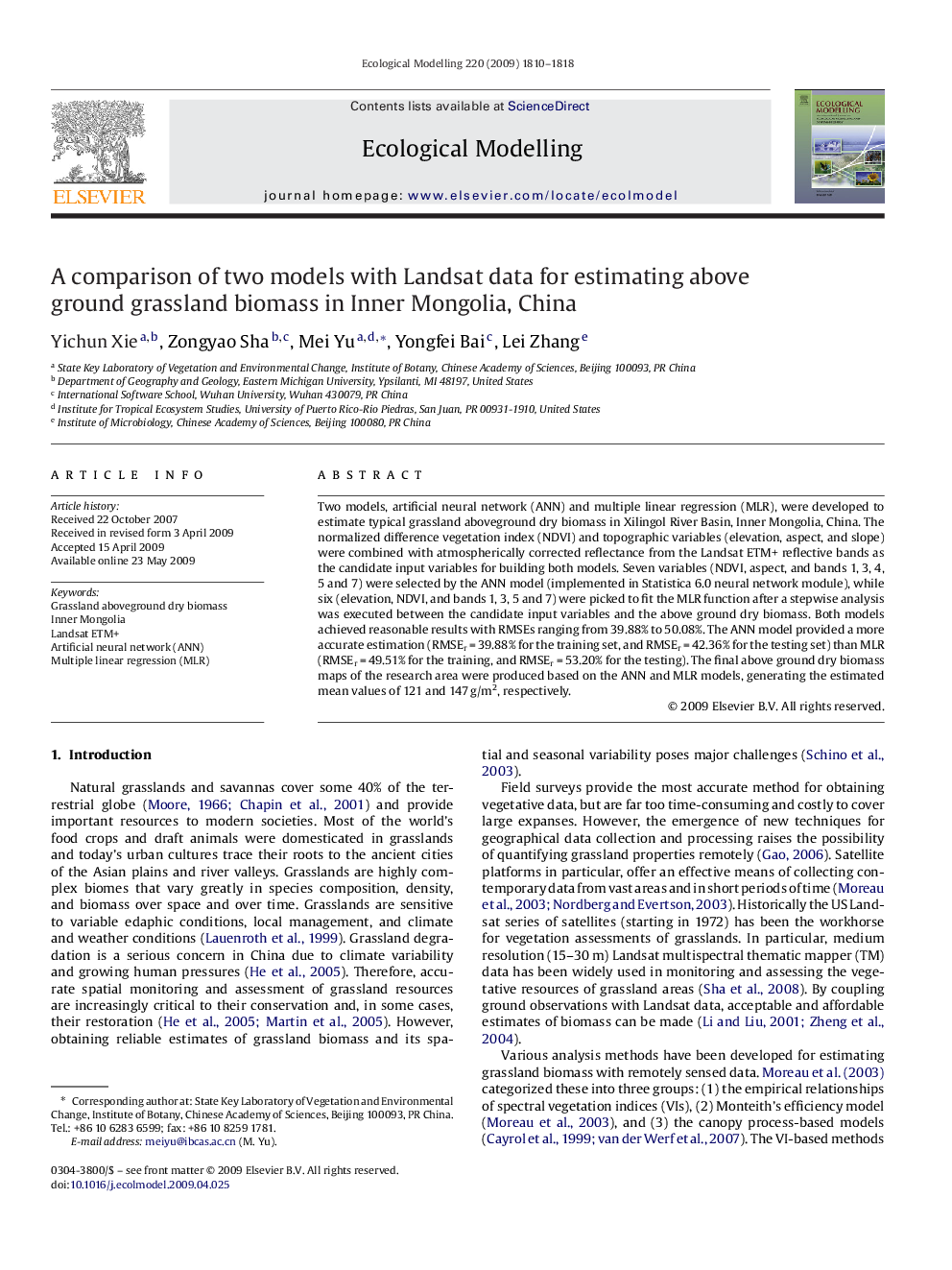| Article ID | Journal | Published Year | Pages | File Type |
|---|---|---|---|---|
| 4377956 | Ecological Modelling | 2009 | 9 Pages |
Abstract
Two models, artificial neural network (ANN) and multiple linear regression (MLR), were developed to estimate typical grassland aboveground dry biomass in Xilingol River Basin, Inner Mongolia, China. The normalized difference vegetation index (NDVI) and topographic variables (elevation, aspect, and slope) were combined with atmospherically corrected reflectance from the Landsat ETM+ reflective bands as the candidate input variables for building both models. Seven variables (NDVI, aspect, and bands 1, 3, 4, 5 and 7) were selected by the ANN model (implemented in Statistica 6.0 neural network module), while six (elevation, NDVI, and bands 1, 3, 5 and 7) were picked to fit the MLR function after a stepwise analysis was executed between the candidate input variables and the above ground dry biomass. Both models achieved reasonable results with RMSEs ranging from 39.88% to 50.08%. The ANN model provided a more accurate estimation (RMSEr = 39.88% for the training set, and RMSEr = 42.36% for the testing set) than MLR (RMSEr = 49.51% for the training, and RMSEr = 53.20% for the testing). The final above ground dry biomass maps of the research area were produced based on the ANN and MLR models, generating the estimated mean values of 121 and 147 g/m2, respectively.
Related Topics
Life Sciences
Agricultural and Biological Sciences
Ecology, Evolution, Behavior and Systematics
Authors
Yichun Xie, Zongyao Sha, Mei Yu, Yongfei Bai, Lei Zhang,
